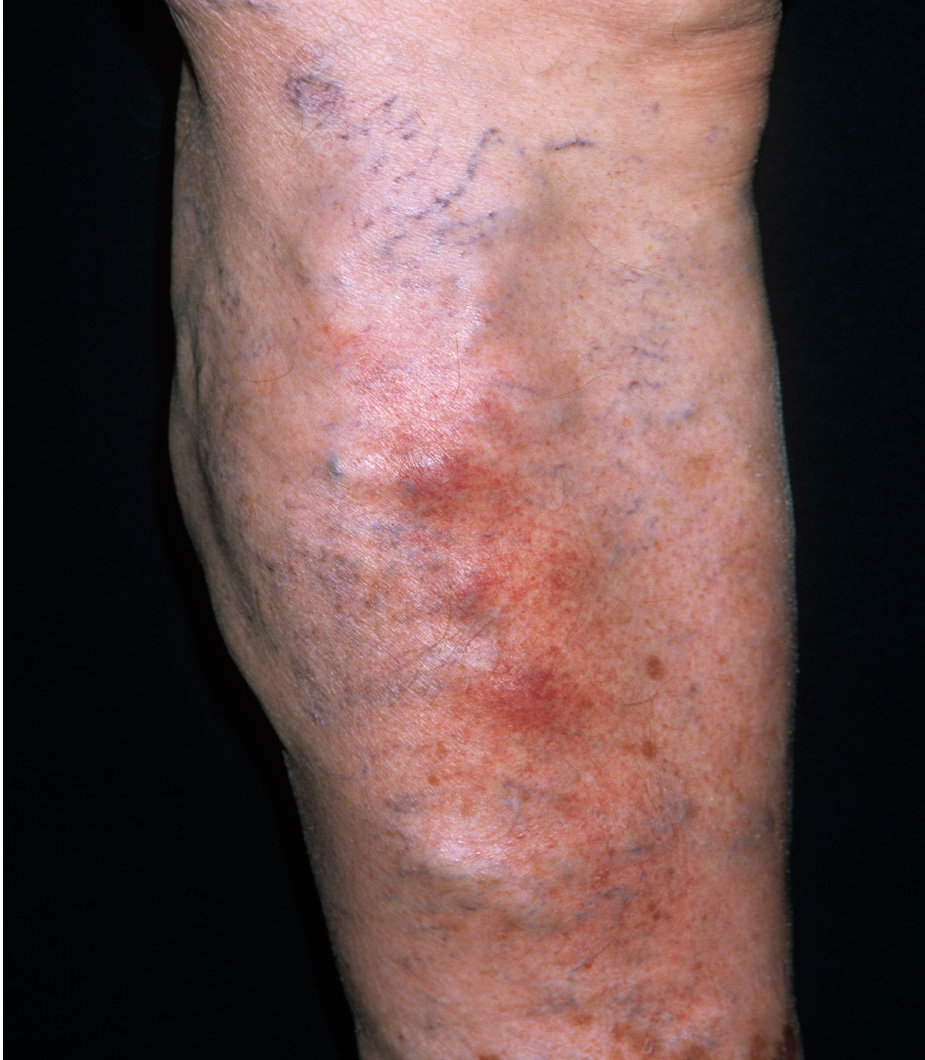Superficial thrombophlebitis (ST) or superficial venous thrombosis is a relatively common inflammatory thrombotic disorder that involves the development of a thrombus in a superficial vein located near the surface of the skin. The signs and symptoms of this condition include pain and a reddened, warm and tender cord extending along the vein, as well as erythema and oedema in the surrounding tissue. Patients with ST are at risk of developing more serious conditions, including deep vein thrombosis (DVT), pulmonary embolism (PE) and venous thromboembolism (VTE) (Unno et al, 2002; Quenet et al, 2003).
The majority of cases of ST develop in varicose veins on the lower limbs. Risk factors include immobilisation, trauma, postoperative states, pregnancy, puerperium (the period immediately following childbirth), active malignancy, autoimmune diseases, use of oral contraceptive pills or hormonal replacement therapy, advanced age, obesity and a history of VTE (de Moerloose et al, 1998).
There is a lack of consensus on the best practice for management of patients with ST, and current strategies include surgery, elastic stockings and non-steroidal anti-inflammatory drugs, which are aimed at reducing inflammation and pain, as well as the use of several anticoagulant medications.
Objective/s
The primary objective of the review (Di Nisio et al, 2018) was to assess the efficacy and safety of topical, medical and surgical treatments for ST of the leg, related to the improvement of local symptoms and the reduction of complications associated with VTE. Note that this is the second update of a review originally conducted in 2007.
Intervention/Methods
The review included randomised controlled trials (RCTs) that evaluated topical, medical and surgical treatments for ST of the legs. The participants included hospitalised and non-hospitalised patients with a diagnosis of ST in the lower extremities.
The primary outcomes included:
The secondary outcome measures considered were:

Results
A total of 33 studies were included in this review, including 7296 participants. The interventions and comparisons varied widely between the studies. In a large placebo-controlled RCT (n=3002), the administration of sub-cutaneous fondaparinux was found to be associated with a significant reduction in symptomatic VTE and ST recurrence compared with placebo (moderate-quality evidence). In a smaller study (n=472) that compared fondaparinux to rivaroxaban, a non-significant reduction in symptomatic VTE was identified. No major episodes of bleeding were reported in either of these studies.
The results of a study that compared low-molecular-weight heparin with placebo found a reduction in the extension and recurrence of ST (low-quality evidence) and no significant effects on symptomatic VTE or major bleeding (low-quality evidence).
Overall, the use of topical treatments was found to improve local symptoms. Surgical treatment combined with elastic stockings was associated with a lower VTE rate and ST progression compared with the use of elastic stockings only.
Conclusions
The authors of the review reported that the prophylactic use of fondaparinux for 45 days was a valid treatment strategy for most patients with ST of the legs. The results for topical treatment or surgery were too limited for conclusions to be drawn on the efficacy of these measures in preventing progression to VTE.
Implications for practice
Nurses should be aware that patients with ST of the legs are at risk of developing more serious disorders, including DVT, PE and VTE, and should ensure that they monitor these patients appropriately for any signs and symptoms of deterioration. They should also ensure that preventative actions are in place to mitigate these risks. BJCN

